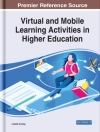We all want our students to feel safe, collaborate well with others, feel ownership for their learning, and be joyfully engaged in their work. Nevertheless, many teachers end up using language patterns that undermine these goals. Do any of these scenarios sound familiar?We want students to take responsibility for their learning, yet we use language that implies teacher ownership. We want to build positive relationships with students, yet we use sarcasm when we get frustrated. We want students to think learning is fun, yet we sometimes make comments that suggest the opposite. We want students to exhibit good behavior because it’s the right thing to do, yet we rely on threats and bribes, which implies students don’t naturally want to be good.What teachers say to studentswhen they praise or discipline, give directions or ask questions, and introduce concepts or share storiesaffects student learning and behavior. A slight change in intonation can also dramatically change how language feels for students. In What We Say and How We Say It Matter, Mike Anderson digs into the nuances of language in the classroom. This book’s many examples will help teachers examine their language habits and intentionally improve their classroom practice so their language matches and supports their goals.
Mike Anderson
What We Say and How We Say It Matter [PDF ebook]
Teacher Talk That Improves Student Learning and Behavior
What We Say and How We Say It Matter [PDF ebook]
Teacher Talk That Improves Student Learning and Behavior
Dieses Ebook kaufen – und ein weitere GRATIS erhalten!
Sprache Englisch ● Format PDF ● Seiten 168 ● ISBN 9781416627050 ● Verlag ASCD ● Erscheinungsjahr 2019 ● herunterladbar 3 mal ● Währung EUR ● ID 6904309 ● Kopierschutz Adobe DRM
erfordert DRM-fähige Lesetechnologie












